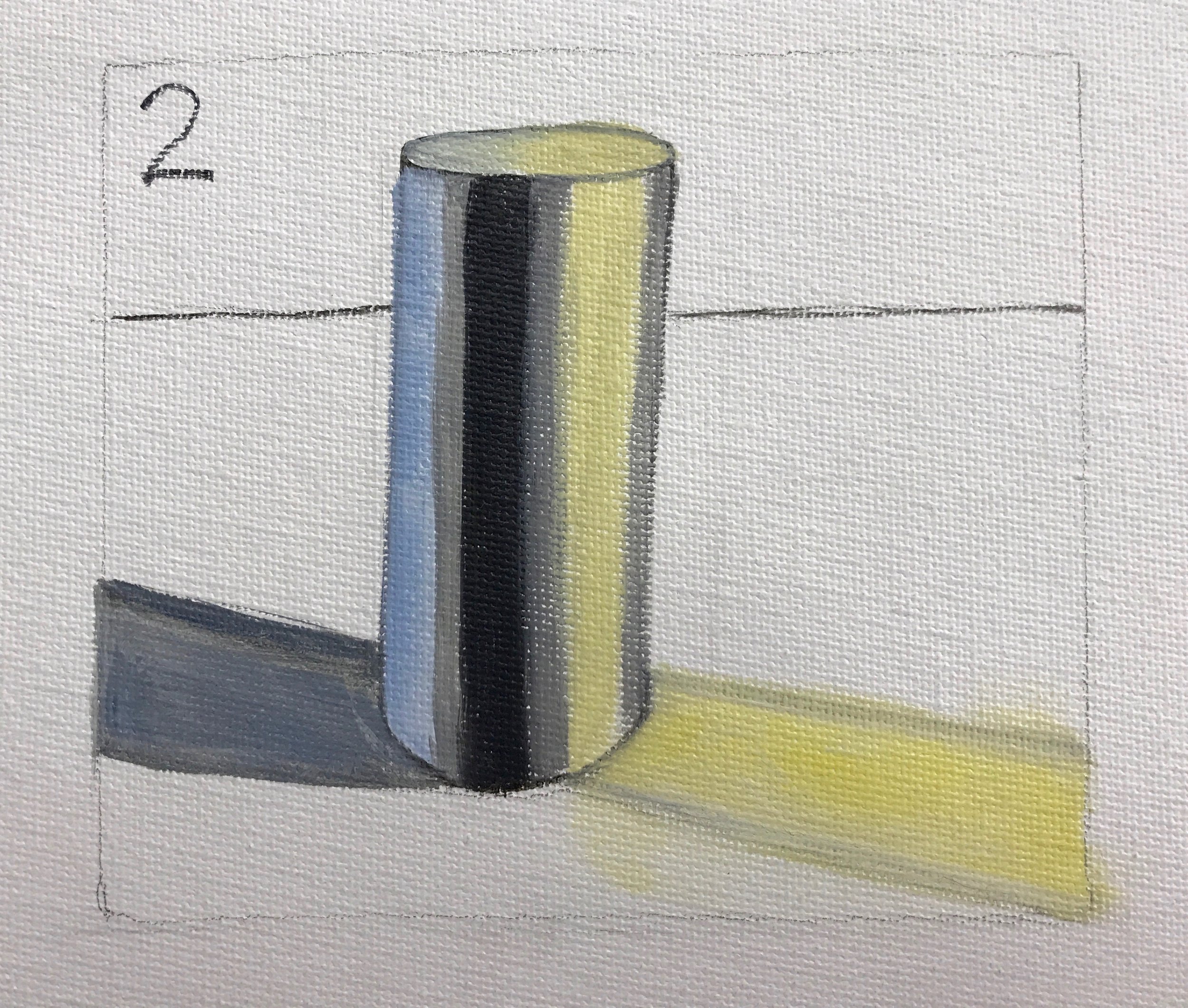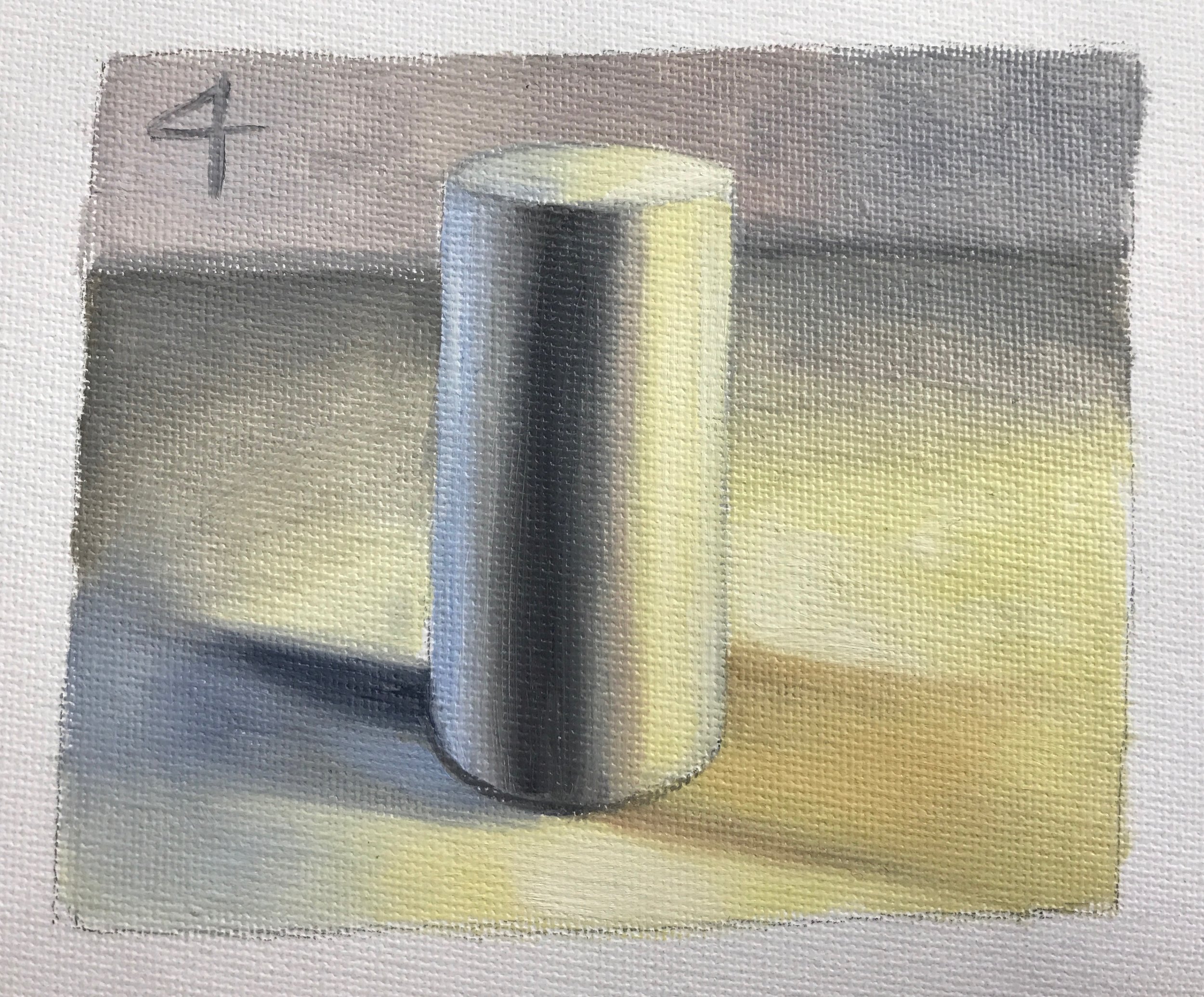Cylinder Tutorial
This tutorial builds on the sphere and cone lessons, adding more detail to the object and background, and emphasizing two cast shadows with more warms and cools. The two different cast shadows are caused by light sources coming from opposite directions, one cool and one warm. The warm light casts a cool shadow, and the cool light casts a warm shadow! Use the photo for reference.
Steps 1 and 2
1. Start with black and white paint and some oil medium. Draw the outline of the cylinder, its cast shadows, and the horizon. Use paint mixed with enough medium to make it runny and easy to move. Use a pointy brush, like a small round.
2. Paint stripes to depict the various values of shadow and light. Use a little yellow for the lightest stripe and a little blue for the reflected light on the far left. Use a tiny bit of red in the gray stripes on either side of the black stripe. Paint the cast shadow on the left with dark gray mixed with a little blue. Paint the cast shadow white mixed with yellow.
Steps 3 and 4
3. On the" back wall" paint three separate rectangles of varying values, getting darker as you move right. You can add a tiny bit of red to each. Paint the surface on which the cylinder sits in various graded shapes, lighter on the lower right getting darker on the back left. The lightest tones are warm (and a little yellow) and the darkest are cooler (add a little blue.) Paint a strong proximity shadow to the left of the object, transitioning to a bluer, lighter gray as it moves away from the object. Add slightly brown rectangles to outline the warm cast shadow on the right. Keep all the colored shapes neutral and gray by mixing white and/or black to them. Otherwise they will be too colorful. Don't blend anything until all the shapes are filled in. When you blend (Step 4) don't over-blend and lose the separate colors. You are only blending the transition space, or where the shapes meet.
4. You want to blend everything while it's wet. Use strokes going in all directions. Don't over-blend or your contrast will disappear. You want your darks dark and your lights light and a smooth transition in between. It's important to smooth the meeting place where the object and background and shadow touch each other. The cast shadow can have a blurrier edge than the object, especially as it gets farther way from the cylinder.




